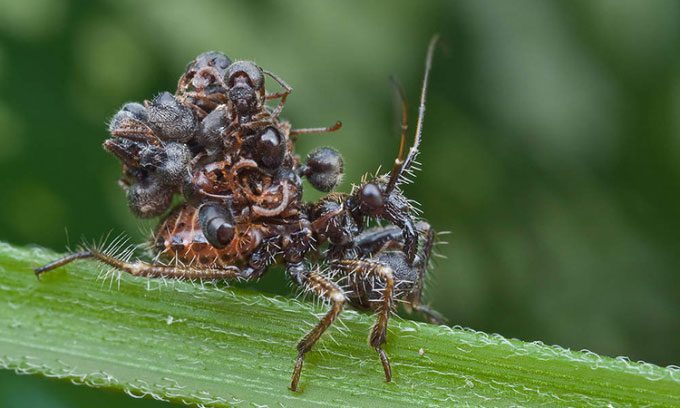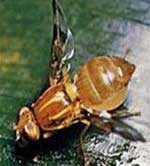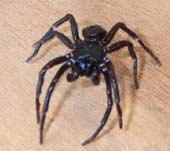The assassin bug Acanthaspis petax carries a “backpack” made from the remains of insects, helping it camouflage while hunting or distracting enemies when it needs to escape.
In the eastern regions of Africa and Asia, there exists a species of insect with a unique camouflage mechanism: using the bodies of other insects to conceal itself. Scientifically named Acanthaspis petax, this insect is classified as an assassin bug—a term that refers to thousands of insect species capable of stabbing their prey and sucking their fluids. Acanthaspis petax possesses this ability as well, but its methods of hunting and evading capture make it stand out in the world of assassin bugs, as reported by Newsweek on October 31.

Acanthaspis petax bug with ant remains on its back. (Photo: Kurt/Orionmystery)
Entomologists have noted that Acanthaspis petax tends to move around with a “backpack” on its back. This backpack is sometimes made from plant materials, while at other times it consists of the hollow remains of insects. It may sound frightening, but it serves an important purpose for Acanthaspis petax.
“As far as I know, Acanthaspis petax primarily feeds on ants. Ants are highly social and communicate extensively through chemical signals. I believe these assassin bugs try to camouflage themselves from ants using these chemicals; otherwise, ants would employ very effective defensive measures,” said Andrew Deans, a professor of entomology at the College of Agricultural Sciences at Pennsylvania State University and director of the Frost Entomological Museum.
The plant materials or dead insects can also serve as a protective mechanism. In one study, experts made Acanthaspis petax confront potential predators and found that its camouflage confused the predators.
They also observed that the bug could drop its backpack if threatened. In such cases, the backpack acts as a distraction, allowing it to escape. In this instance, the backpack serves a purpose similar to that of a lizard’s tail, which can detach to help the lizard flee from predators.
Acanthaspis petax can carry up to 20 ants at once, all glued together by a sticky substance. However, it is not the only insect that uses the remains of other insects for camouflage.
“The larvae of the green lacewing also employ this tactic—camouflaging with remains. Their bodies are covered in hairs and tubercles that help hold onto the remains of aphids. They can act like ‘wolves in sheep’s clothing,’ hunting aphids without facing consequences,” Deans added.





















































